I visited a silk farm and it was wonderfully interesting and brought back many happy memories of my son’s infant school days in Portugal. All the kids kept silk worm larvae and the village mulberry trees took a bashing as all the leaves were stripped to feed the larvae. If I hunt through my Portuguese treasures I am sure I will find a golden silk worm cocoon.
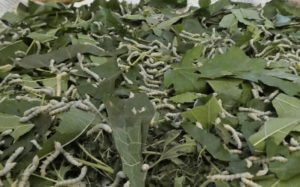
The production of silk started in China at least 2000 – 3000 years BC and the Chinese kept the secret for around 2000 years before Chinese migrants took their knowledge and silkworm eggs to Korea in 200 BC and silkworm cultivation started in India in 300 AD. Silk was originally produced for the exclusive use of the Chinese Imperial court but gradually use of silk cloth spread through society and it became an important export. The silk trade from east to west along what came to be known as the Silk Road, was extremely important. Chinese ambassadors took silk garments as gifts and silk became a much prized fabric throughout Europe.
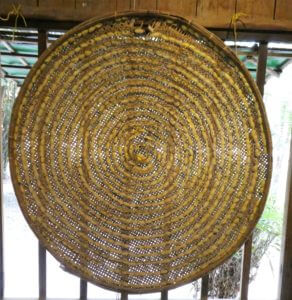
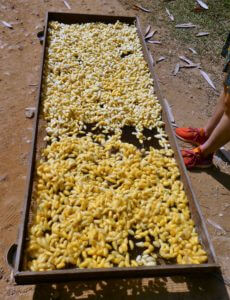
Sericulture reached Cambodia in the thirteenth century AD and silkworm production started along the banks of the Mekong and Bassac rivers. However, the silk industry in Cambodia is in decline – the number of hectares under mulberry bush cultivation has decreased from 6,000 hectares in the 1940s to 40 hectares now. Cambodia is a net importer of silk yarn with a value of around 10 million USD per year. The Khmer Rouge almost completely wiped out the industry and in the 30 years since, sericulture has struggled to recover. Other Asian countries such as China, India, Thailand and Vietnam have embraced modern technology and China and India produce around 90% of the world’s silk.
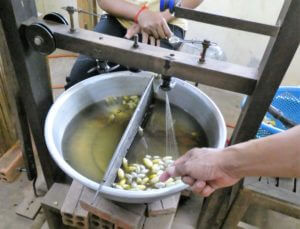
In Cambodia, there have been various programmes to revitalize sericulture; for example FAO ran the Silkworm Egg Production Centre and the Cambodia National Silk Strategy was published in 2016 which outlines a public-private partnership to invest in the modernization of the industry. The importance of the Cambodian silk industry to the Cambodian economy is relatively insignificant but the industry opens up opportunities for income generation in poor rural groups that have few other alternatives.
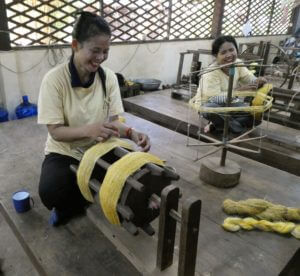
At the silk farm I visited just a few kilometres outside Siem Reap, silk is produced in the traditional way. Mulberry leaves are grown on bushes rather than trees as this makes it easier to pick the leaves. The eggs of the silkworm moth, Bombyx mori, hatch after 10-12 days of incubation and are then fed mulberry leaves continuously for 28 days. The larvae then start to produce the golden silk cocoons in which they will pupate and emerge as adult moths in 10-12 days. A small percentage of the cocoons are kept for breeding purposes, the rest are harvested for silk production.

The pupae are heat killed and then the cocoons are boiled in water and the outer cocoon silk which is tougher and of a poorer quality is spun off the cocoons. Then the finer silk is spun off as shown in the photos. It is a very manual process and after the initial spinning the raw silk has all the knots picked off the threads, is de-gummed, bleached and dyed and then finally spun into wonderful fabrics.
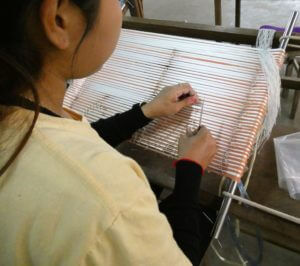
The production of the intricate patterns using the Ikat method is labour intensive as the patterns are tie dyed into the threads before they are spun onto bobbins and then woven into the complicated patterns you can see. It is a truly remarkable process and I understand why the price is high for one of these scarves!
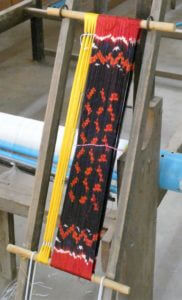
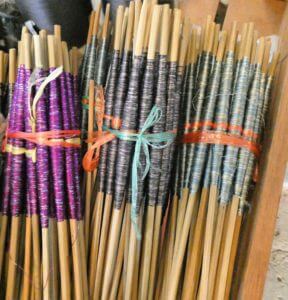
The percentage of women in sericulture is high, up to around 87% and enterprises like the one I visited, are actively working with rural disadvantaged communities. They train the women and provide rural workshops near to their homes, assist with basics such as medical care and schooling, and work in partnership with NGOs.
Let’s hope that the famous Cambodian golden silk industry can be saved and provide a stable industry for many rural families.
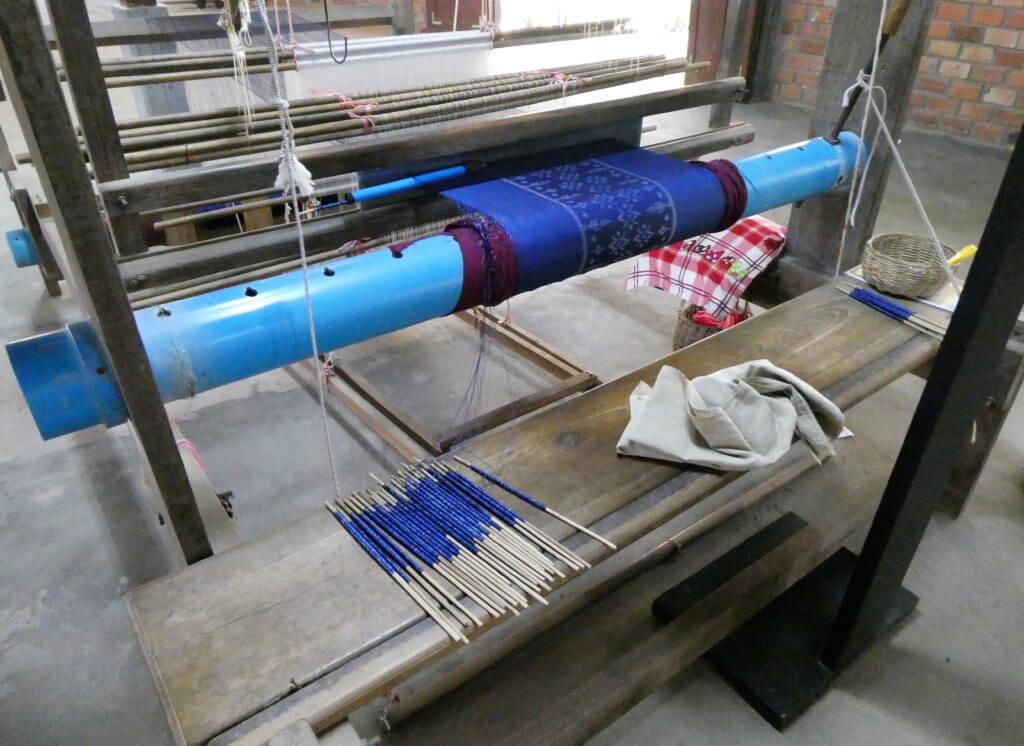
©Copyright overthehils.com 2018

